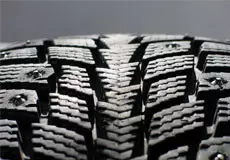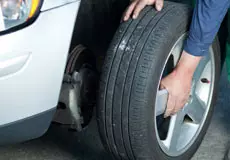Best Deals on Wheels
Financing Available!
Allow my family to take care of yours!


With hundreds of name brand and economy tire models available on the market today, how do you choose the right tires for your vehicle? It’s really not that difficult, if you start by considering:
Get the best products for the best prices around
TIRE EDUCATION



All Pros Tire and Rims - Education 101
Selecting the Right Tires for Your Vehicle
Vehicle Type
Auto tire models are broadly divided into:
-
Passenger - for sedans, coupes, and minivans. They have wide range of
performance categories
-
Light Truck/SUV - engineered to handle heavier loads. Many are designed for both on and off-road use. Pickups, SUVs, full-size vans, and the new crossover
vehicles all use these heavy-duty tires.

Tire Categories
Manufactures and retailers classify tires by seasonal use and handling characteristics, including:
All-Season – are original equipment on most cars, minivans, and some pickup trucks. Replacement all-season tires
offer acceptable handling, noise, tread life and value, but don’t excel in any one area. All-season tires are engineered
for: Year-round use; All temperatures; All weather conditions; All surfaces.
Touring – are designed for sporty sedans and coupes. Handling characteristics include: A smooth, quiet ride; Excellent
dry pavement traction and steering response; Good wet weather traction; Sophisticated look.
Performance – are standard equipment on sports cars. Performance tires are further subdivided into high, ultra high,
maximum, and extreme performance categories, as well as models engineered for track and competition use. They deliver:
Maximum dry street grip and steering response; High speed handling; Acceptable wet weather performance (some models);
Sport styling.
Winter/Snow – look for the mountain snowflake emblem stamped on the sidewall. All-season tires are designated
M+S, M/S, or MS for “mud and snow,” but are not true snow tires. Winter tires for passenger cars and trucks offer:
Softer, stickier rubber formulated for temperatures below 45 degrees; Maximum grip on cold pavement, snow, and
ice; Tread patterns designed to grip and release snow.
Off-Road – For light trucks and SUVs. Available in on/off-road and dedicated off-road tread patterns. These rugged tires
are designed for: Construction sites; Dirt roads and trails; Deep mud and loose soil.
Tire Size
The tire specifications for your vehicle can be found:
-
-
In your owner’s manual
-
Printed on the vehicle placard - usually a sticker on the driver’s door post, the edge of the driver’s door, or inside the fuel door.
Reading a Tire
You can find out a lot about a tire by checking the codes on the sidewall.
Class, Size & Load Index
Speed/Performance Rating
Uniform Tire Quality Grading (UTQG)
When to Replace Your Tires
We recommend that you start shopping for new tires when your tread wears to 4/32 inch. This is just enough tread to sluice
away water and keep your tires in contact with the pavement. The most common tread depth on new tires is 10/32 inch. The
legal minimum in most states is 2/32 inch.
-
The Quarter Test A Washington quarter, placed upside down in the tread grooves at several points, is a handy
gauge for safe tread depth. From the coin edge to the top of Washington’s head is 4/32 inch.
-
The Penny Test To be legal in most states, your tires must pass the Lincoln penny test. From the coin edge to the
top of Lincoln’s head is 2/32 inch.
-
Wear Bars Manufacturer’s place wear bars in the grooves between tire treads. Replace your tires before the tread
wears flush with the bars.
Even on dry pavement, it takes longer to stop with bald tires. On wet pavement, you might not be able to avoid a hazard in time.
Taking Care of Your Tires
Your tires take care of you, so take care of your tires. They will last longer and save you money on gas, if you follow these tips:
-
Keep your tires inflated to the correct pressure Your vehicle won’t handle well if your tires are too soft or too hard. Under
or over inflation can even cause a blowout. Consult your owner’s manual or check the vehicle placard for the specified
PSI (pounds per square inch) for your tires. (See Tire Size above.) Properly inflated wear tires wear evenly and can help you
get up to 3% better gas mileage
-
Rotate your tires This helps ensure that your tires wear evenly. Most tire manufacturers recommend a 6,000-8,000 mile
interval. It’s convenient to rotate your tires when you’re in for an oil change.
-
Periodic alignment checks You won’t notice by looking at them, but rough roads can knock your wheels slightly out of
alignment. They fight each other, reduce fuel efficiency, and cause premature tread wear.
-
Periodic suspension checks Worn shocks, struts, and other suspension components can also shorten tire life.
